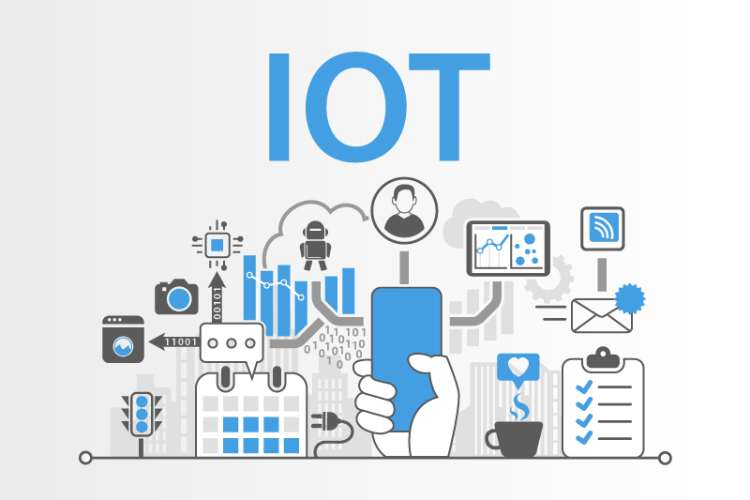- Understanding the complexities of getting products to market for OEMs and setting realistic expectations are crucial for the success of the IoT-connected products market
- The 80% increase is seemingly problematic for the success of IoT initiatives, and it may appear counterintuitive to most readers
OEMs take an average of 41 months to bring connected products to market. According to a survey of 100 senior executives and department leaders at OEMs, queried as part of the IoT Analytics’ 206-page IoT Commercialization & Business Model Adoption Report 2024, companies took an average of 18.5 months to go from project kick-off to proof of concept, with business case development and stakeholder alignment taking a large chunk of the time. It then took 22.8 months from proof of concept to the first paying customer.
This 41-month time-to-market period represents an 80% increase from 2020. IoT Analytics research on this topic in 2020 found the average time to market was 23 months. The 80% increase is seemingly problematic for the success of IoT initiatives, and it may appear counterintuitive to most readers, mainly for the following three reasons:
- Rapid technological advancements: The swift advancement in IoT technologies would suggest faster technology development and deployment. It is reasonable to assume that improved tools and hardware would shorten the journey from project kick-off to market.
- Increased market knowledge: With more industry professionals and consumers becoming knowledgeable about IoT, this should increase awareness and, in theory, lead to quicker project cycles and market adoption.
- Historical learning curve: Based on past tech trends, one would expect the maturing IoT sector to benefit from earlier experiences, leading to more efficient processes and reduced time to market.
Thus, this begs the question: Why was there such a drastic increase in three years? The IoT commercialization report shares four contributing factors based on discussions with experts in the field working at connected-product OEMs. Prominent examples of OEMs that have innovated their business model and subsequently scaled to hundreds of thousands or even millions of connected devices at this point include:
- BMW, with over 20 million connected vehicles on the road worldwide.
- John Deere, with over 500,000 connected agriculture- and construction-industry machines in the field.
- Schindler, with over 500,000 connected elevators around the world.
The factors contributing to greater OEM time to market
1. Project complexity
IoT projects’ complexity has extended development cycles due to advanced technology integration. Features like additional sensors, local data processing, advanced network architectures, and integration with legacy systems all add layers of complexity to the connected product development process. A few years ago, many OEMs were measuring just a small selection of different data points of the equipment, often in spaced-out intervals with basic dashboarding functionality.
2. Regulatory hurdles
Recent regulations have pressured manufacturers to invest time and resources into compliance. Countries and regions have continually sought to promote greater emphasis on privacy, security, sustainability, and transparency.
3. Higher emphasis on security
Security breaches have led to stricter measures, extending IoT development timelines. Large-scale security breaches involving connected devices, like the Verkada camera breach in 2021 or the Ring camera hacks in 2019, have heightened awareness of the importance of IoT security. As a result, companies are implementing stricter security measures and conducting more thorough security testing throughout the development process.
4. More advanced use cases
Advanced IoT use cases require more R&D, lengthening development times. Companies are moving beyond basic functionalities like simple dashboards and remote monitoring and are exploring more complex and differentiated use cases for their connected IoT products. These advanced use cases, such as optimizing specific workflows or providing unique customer experiences, require more in-depth research, development, and testing than simpler applications.
Analyst opinion: Increased time to market does not necessarily mean less successful projects
Extended IoT product timelines indicate better security and user-focused solutions. While the increased time to market for connected IoT products may appear problematic for the overall success of IoT, it shows that OEMs are taking time to address various hurdles (such as security considerations and regulations). This ultimately benefits end users since the solutions promise to be more secure and likely to address their complex operational needs.
The increased product time to market is not surprising. IoT Analytics regularly engages with OEMs and other market participants in the IoT industry. Although the 80% increase in product time to market appears a bit high, the team has had several discussions with various market actors who shared that they have seen OEMs taking longer to get their products to market.
For example, a senior manager at an edge computing software provider recently shared that their customers are spending more time addressing security requirements and developing value-adding features, capabilities, and analysis tools. Additionally, a senior manager at a cloud-based IoT platform provider added that their clients’ average project team size increased from 14 team members in 2014 to 20 in 2024, leading to increased complexity.
While anecdotal, these discussions add to our assessment that taking the time to get the right regulatory, technology, and use case needs can result in a product being seen as reliable and valuable to the customers.

















